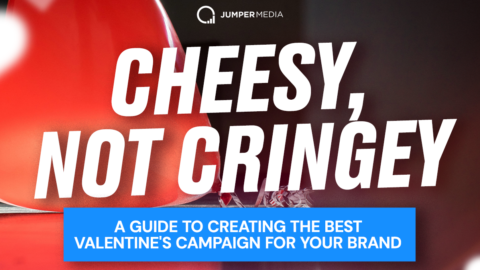Take a look at this Instagram ad:
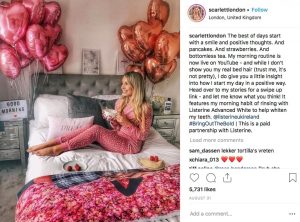
That Instagram ad caused a lot of debate.
This artificial, overly-styled ad (or perfectly-styled, depending upon which side of the debate you fall on) shows an unrealistic “woke up like this” scenario. And if you ask me, I don’t even know what she’s promoting. That Listerine bottle is barely there; I only noticed it because I first heard about this ad in an article that mentioned Listerine in the title.
This ad gives insight into where influencer campaigns and Instagram marketing are headed…and people don’t like it. Well, some people don’t like it.
The problem that some people have with this sort of post is that it’s attempting to sell a real product in an unrealistic way. It’s trying to fool us, and it’s failing. Even if you like this level of polish, we don’t buy that this is a legit scenario.
Then there are those visuals that are decidedly not styled, which is precisely the point – they’re real, showing an unedited version of life, often through low-quality images or videos.
While some people like the façade that seems to be the norm when it comes to Instagram marketing, others are over it.
In this article, we’re going to go over the ins and outs of both aspirational and raw Instagram content. Then, we’ll talk about the times when both styles overlap. Lastly, we’re going to give you our final verdict, with advice for choosing the type of content to best serve you.
Let’s Talk About Aspirational, Polished, Produced Content
Instagram (and Pinterest, by the way) is aspirational – and that’s what a lot of people like about it. Aspirational content has a way of connecting with some viewers in exactly the right way, especially if they’re used to seeing similar content on their feeds from their other connections. Plus, aspirational doesn’t have to always mean totally, 100% perfect all the time – there’s some wiggle room in there. On the flip side, if the overly-produced content is a betrayal of your brand, personality or audience, it’s going to do more harm than good.
Pros of “Perfect” Instagram Content for Brands
Some people really, really like it. I, personally, have always been most inspired by aspirational imagery. I may know, realistically, that these images are perfected, but I like that – it may just be one side of a brand, a house, a person, but it’s a pretty side, one that I want to emulate in certain parts of my life.
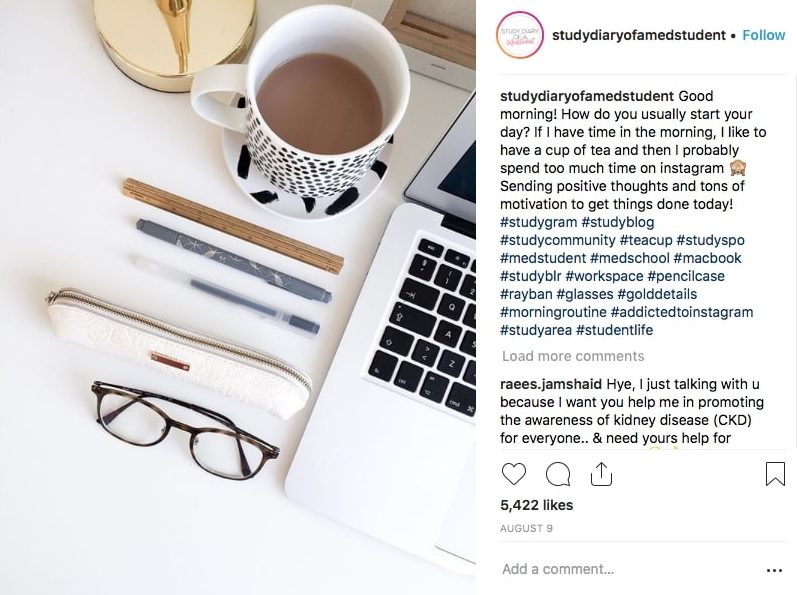
Overly-styled posts can blend in with natural posts from your friends. Ads are now mimicking lifestyle-esque posts from your real friends. Brands are hitting this out of the park – they want their ads to look like the other posts you see, and they’re accomplishing that. Plus, this blending in with real life means that we’re the ones dictating advertising and not the other way around. We’re telling brands what we want so they can cater to us, which is a lot different from the days when brands told us what we need or want or have to have.

You can walk somewhere down the middle. Some brands and influencers have less-edited-but-still-edited Instagram content, letting them remain on-brand while still showing more of themselves for the sake of building a closer, more personal relationship with the viewer.
Influencer @negharfonooni is a great example of this. Her posts follow a similar aesthetic and stick with the same themes on repeat, but while some of them are certainly styled, others are more off-the-cuff. All of them, though, fit with her brand, and you get the sense that even the more organic ones are carefully chosen to fit with her feed.
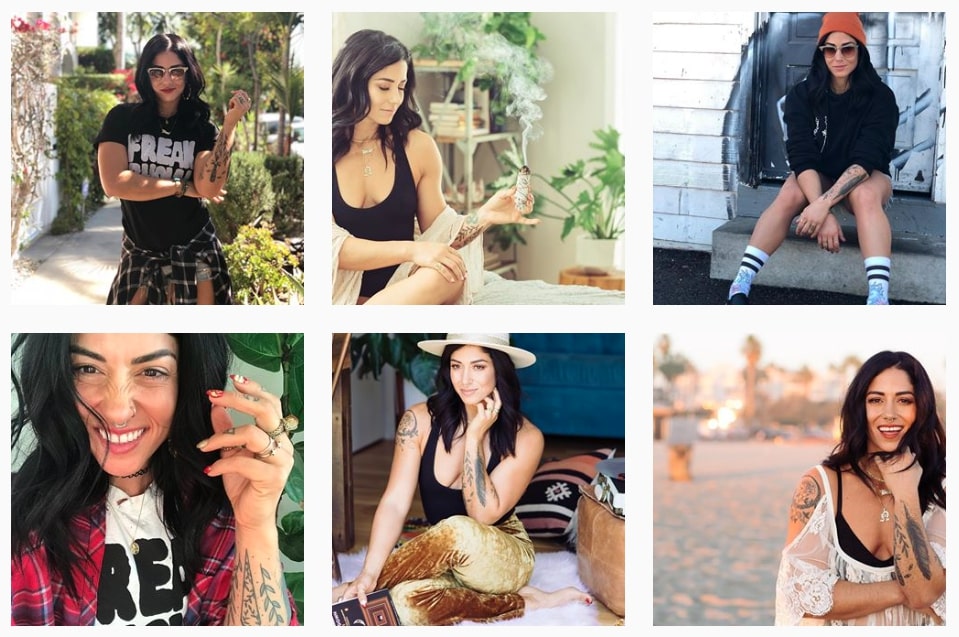
Cons of “Perfect” IG Content for Brands
The brand may be making too far a leap away from its audience. In the Listerine ad example, Scarlett seems to be staying somewhat in-line with the types of posts she usually puts up (a bit more on that a little later), but Listerine may be over-shooting. This is Listerine’s entire Instagram feed, which doesn’t give us much insight into what they’re going for:
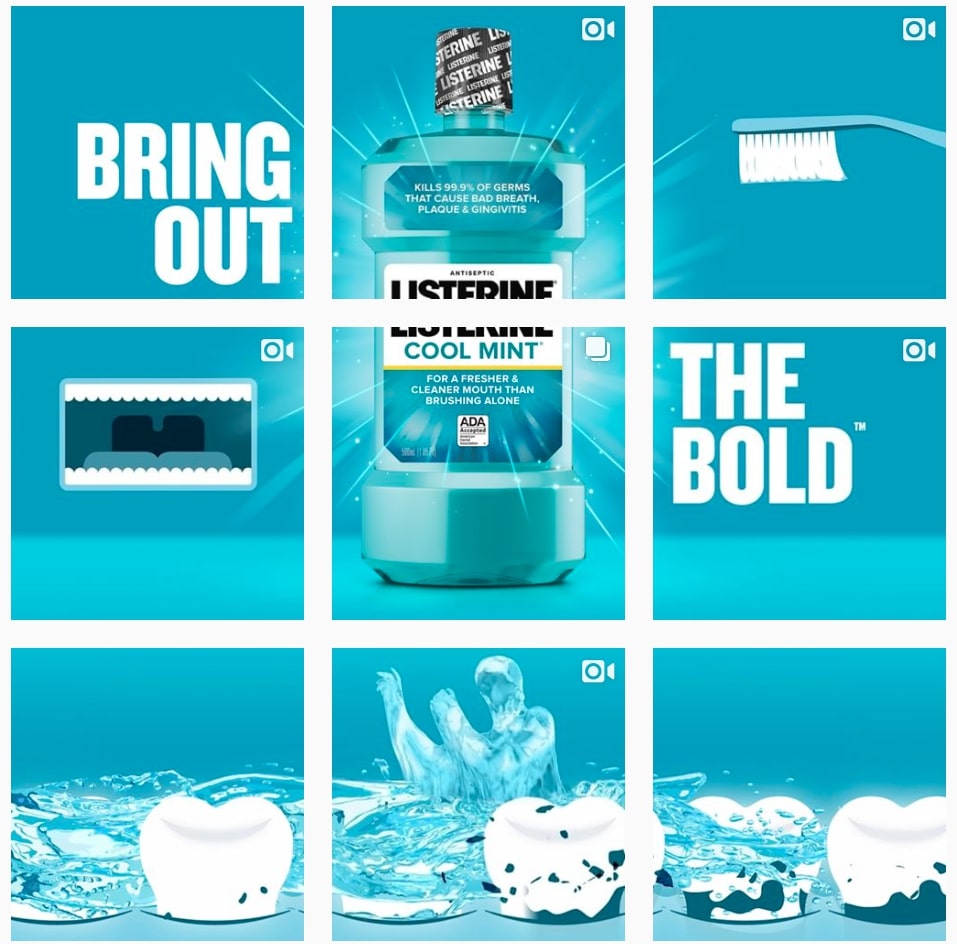
However, their user-generated content – posts that use their branded hashtag #finishwithaswish – could have pointed them in the direction they should go: a less refined, more organic direction.

You may unintentionally lose the trust of your audience or customers. Consumers don’t trust brands that seem manipulative. That’s why some smaller brands or influencers are coming out on top over big brands. Audiences don’t want to feel like the visuals they’re seeing are for profit only and that the brands (or influencers touting them) don’t have the audience’s best interests in mind.
The usually-polished influencer can still go overboard. That Listerine ad still seems overkill for the oft-perfect Scarlett. Yes, she doesn’t have a hair out of place in her Instagram posts, which are bright, beautiful and reflective of a wealthy, nothing-wrong-here life, but they’re not nearly as produced as that one ad.

You have to be careful of falling too far into clichés, which can easily happen when you’re catering to trend instead of authenticity. Remember the #followmeto images that made a huge splash? Photographer @muradosmann started posting them in 2011, and people loved them.
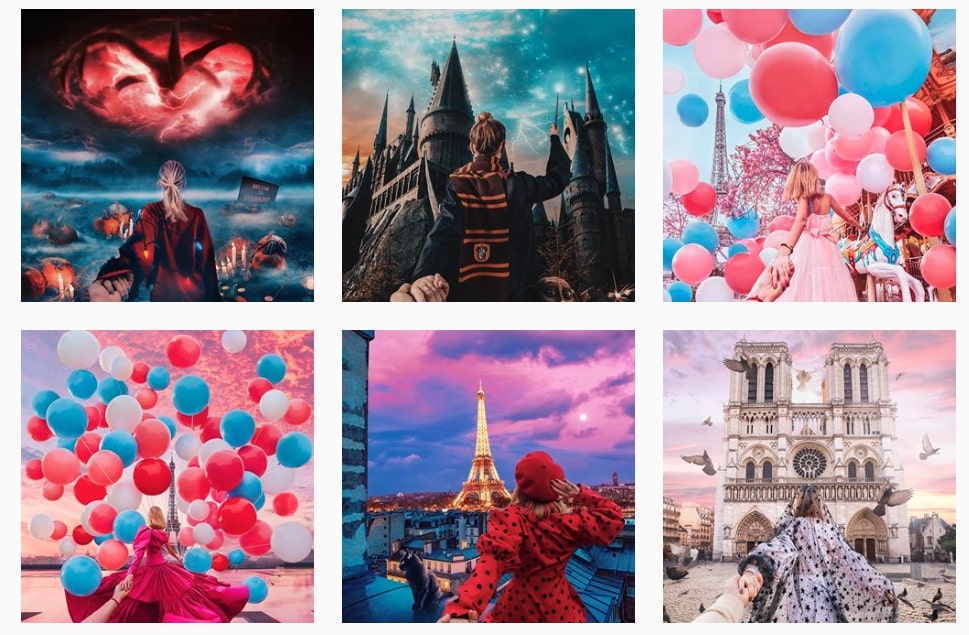
In 2012, he started using the hashtag. And today, so are a lot of other people, including influencers.
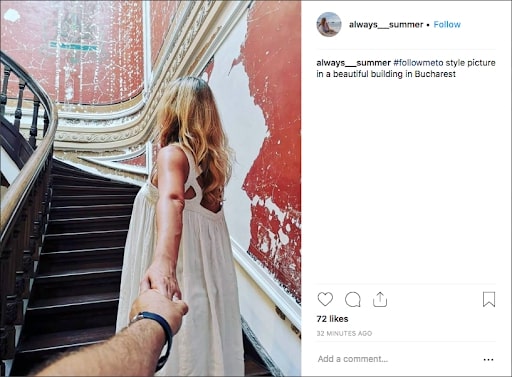
And now the wonderful, unique #followmeto theme has become…generic. Murad was wise about this and created the spin-off account @followmeto to show the behind-the-scenes of the project.

There’s even an entire account called @youdidnoteatthat dedicated to the cliche of Instagram models pretending to take a bite out of food they’re probably not about to eat.
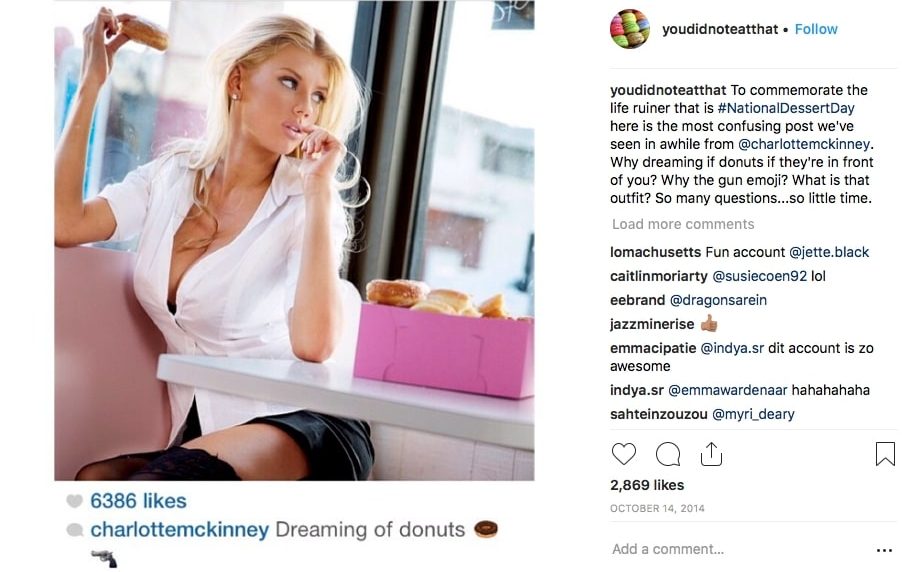
Let’s Talk About Genuine, Raw, Real Content
For our purposes, authentic content refers to content that cares much less (or not at all) about aesthetics and brand cohesiveness for the sake of showcasing a true, sometimes gritty side of life. This is becoming a trend for even big brands, and it’s one to pay attention to and possibly consider for yourself. However, your brand may not be best represented this way, and you could lose your devout customers or followers by forcing this upon them.
To the Instagram Marketer
(A Love Letter)
Click here to see what’s inside.
Pros of Authentic Content
That practically-perfect-in-every-way style may be going out the door. Today, influencers aren’t relying just on airbrushing, filters and staging anymore. Big brands like Aerie, ASOS, Dove, and L’Oreal have used unedited photos of their models in their campaigns. Lancome featured 65-year-old Isabella Rossellini, without retouching, in one of their ads.
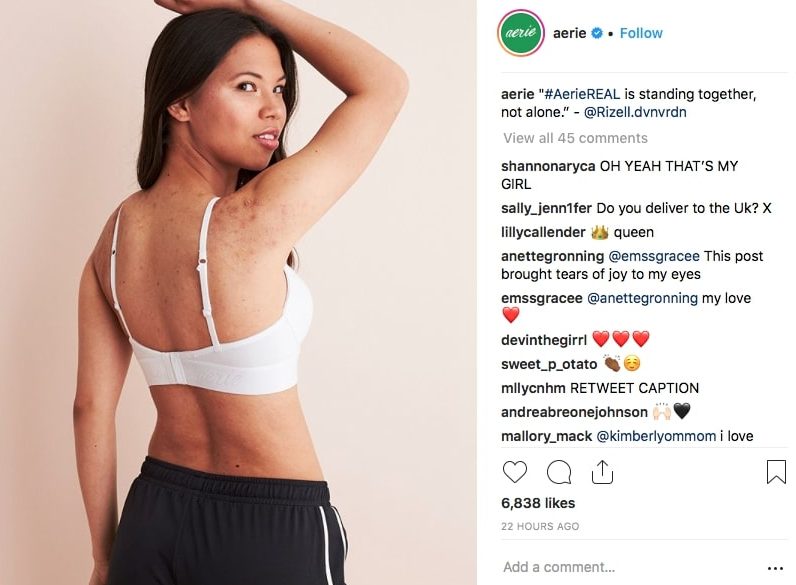
This trend is sparking its own trend: showing edited versus unedited photos side-by-side. It doesn’t stop with just models, either. This is happening with everything from beauty and bodies to homes and parenting styles. The idea is to post real-life examples that are inspiring to real life people, and to veer away from the impossible-to-reach standard set forth by those aspirational, and unfeasible, visuals.

Cons of Authentic Content
You may not be best representing your brand or yourself, or best serving your audience. More important than creating organic content is finding an organic fit between the brand and the influencer – even if that means creating a decidedly not organic post, so long as it increases awareness, engagement or traffic. Staying authentic to your brand is the top goal. For example, an interior designer’s job is to make your home or space beautiful. By showing the less-styled side of things, they’d be betraying their main goal.
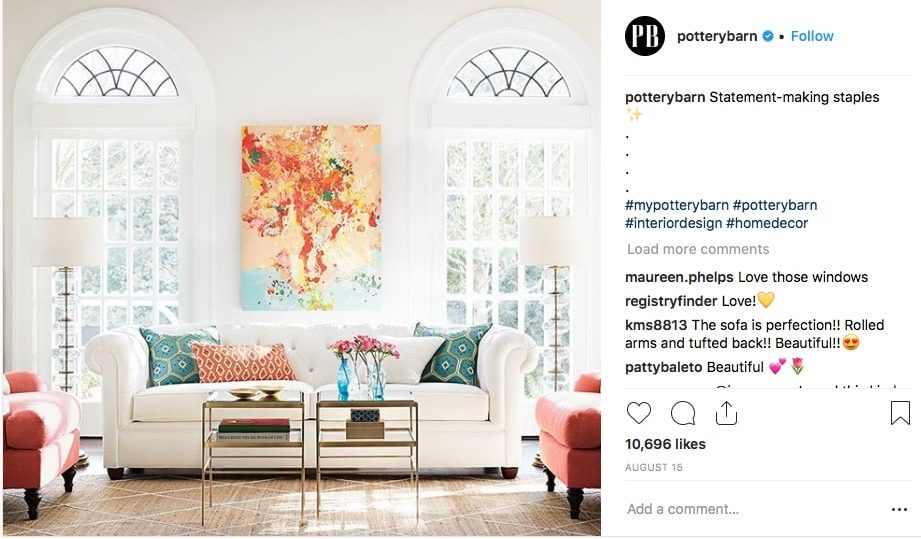
Even disorder can be perfectly styled like @autremondedesigns does with her lifestyle flatlays.

Strict branding leads to customer loyalty (maybe). Some feel that in order to gain customer loyalty and improve sales using Instagram, you have to be extra deliberate with your posts, strongly adhering to your branding. You have to think about the cohesiveness of your feed as a whole, and then create individual ads and posts that fit into that. A polished post is a confident one, which is one of the best ways to get your audience to believe in you. Your audience learns what to expect and they follow you because they’ll consistently get what they know you’ll deliver.
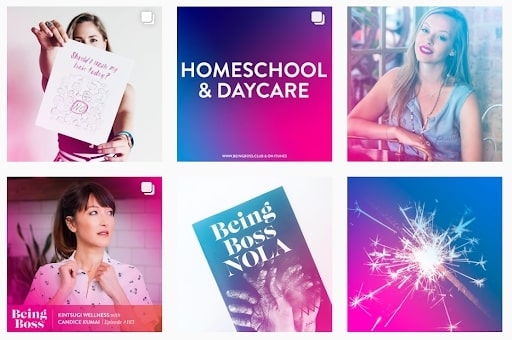
Photos from @beingbossclub
The Truth: A Lot of Instagram Users Fall Somewhere in the Middle
Snapchat has been doing the gritty, unproduced content thing for a while. With Stories, though, which lives on Instagram, a platform that has been more produced through the years, the question is posed: should you stick with raw-style content or lean toward the more produced, like the rest of your Instagram presence?
Both, actually. Or either. It all depends on your business, who you are, your audience…
This is why Stories is an excellent addition to Instagram marketing. It allows for more candid, less-processed, raw, and behind-the-scenes visuals – the “before” to the traditional feed’s “after.” This is a way for marketers to balance the scales – they can keep their main Instagram feed heavily styled and on-brand, then use Stories to show a more real side to things. Instead of choosing either-or, it’s a way to round out your personality as an influencer (after all, real people aren’t “all” anything – we’re not entirely messy and unedited, and we’re not entirely polished, either). Transparency can help smooth out the blowback one might receive from posting unrealistic photos – yes, that photo isn’t the epitome of realism, but I, as a whole, am very real.
Compass Paper Co. has a pretty well-curated feed, with the same colors and subjects represented over and over.

And while they do have some less-polished content in their main feed, it’s more lifestyle than messy behind-the-scenes.

On their IG Stories, though, they post more realness:

What is aesthetically-pleasing is different for everyone. The real question is: what type of aesthetic best represents your brand? Is it a heavily-styled one or something less staged and more informal?
Final Verdict: There is No Final Answer (But We Still Have Advice)
There’s no research to say which type of Instagram content performs better. How your content performs, and the type you choose, comes down to your audience and what you want to put out there. Your Instagram audience should feel that you “get” them based on your content.
In a nutshell, and with exceptions, of course, you should create aesthetically-pleasing, highly-branded content if your audience is following you because of your aesthetics and style (artist, fashion influencer, interior designer, craftsman, photographer); you should produce raw, unedited content if people are following you for your personality specifically, not for your aesthetics, brand or business.
The most important part of all of this? Once you’ve decided which type of content is best for you – polished, raw, or a combination of both – stick with it.
Which type of Instagram content do you prefer? Let us know in the comment sections below!

